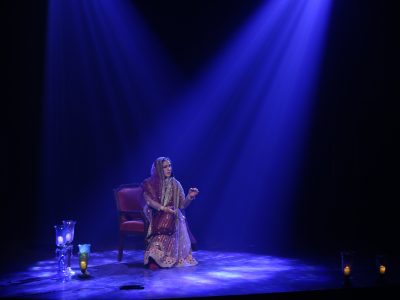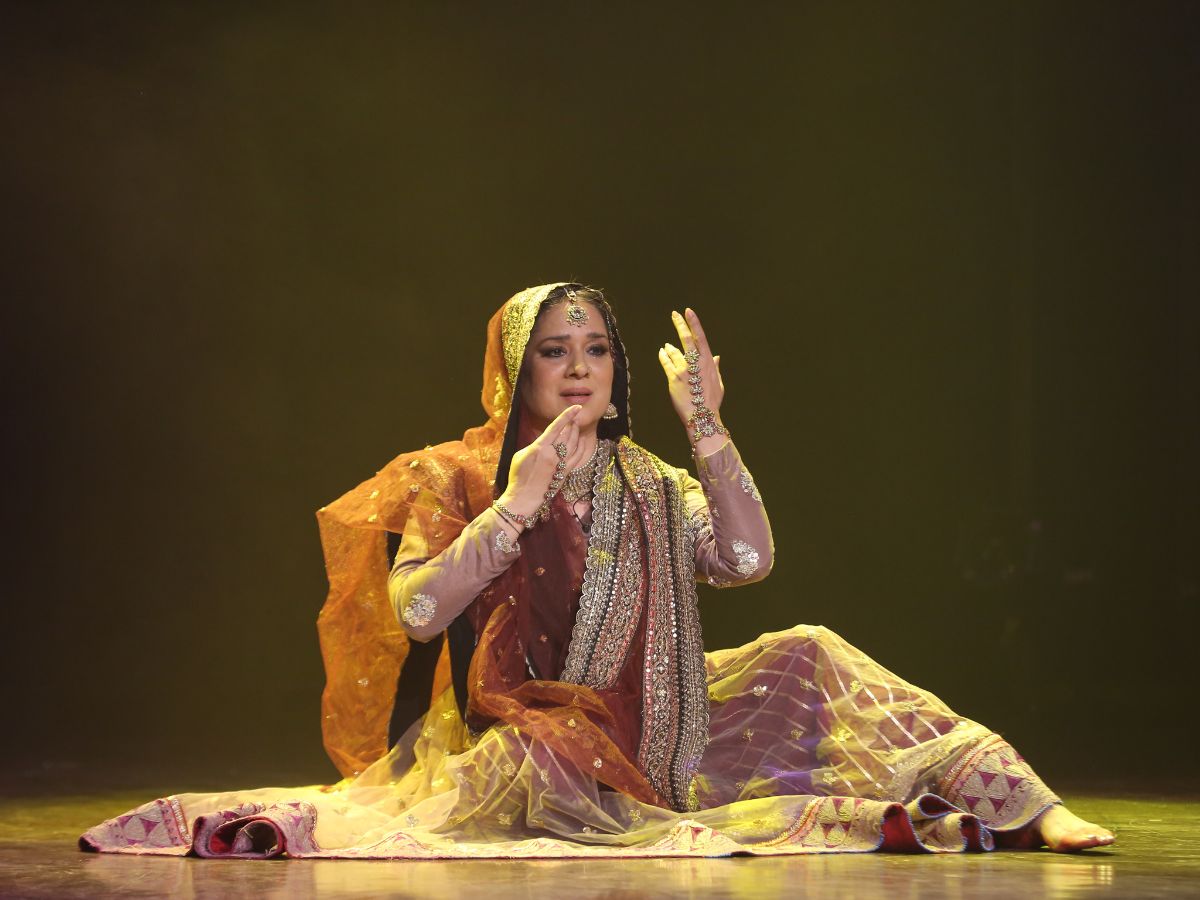Renowned Kathak dancer Manjari Chaturvedi is breaking boundaries with her innovative approach to dance, fusing diverse cultural influences from Rajasthan, Kashmir, Awadh, Punjab, Turkmenistan, Iran, and Kyrgyzstan into her performances. Inspired by Sufi mysticism, she has pioneered a unique dance style known as Sufi Kathak, incorporating movements reminiscent of the whirling dervishes’ meditative practices.
In a bold and commendable endeavour, Manjari is championing the cause of social justice by shedding light on the lives and artistry of courtesans, known as tawaifs, who have long been marginalised and stigmatised by the society.
In the recent Netflix web-series Heeramandi by Sanjay Leela Bhansali, discussion around courtesans has come back to the fore, making tawaif a buzzword.
While the show has largely stripped tawaifs of character development, playing with the same troupes, Manjari says that Bollywood should not be treated as a medium of education.
“Bollywood is not a history chapter. Please do not give Bollywood the responsibility of historical facts. It will give you whatever sells. It is commercially driven and there is so much money at stake. If a story of a damsel in distress sells, then it will give you that, if that of a warrior woman sells, it will work on that. So, Bollywood will only suit commercial purpose,” she says.
“Sanjay Leela Bhansali’s latest webseries ‘Heeramandi’ reinforces the same stereotypes that they were sex workers and lived to sexually entertain emperors of that time,” she laments.
Through her project, “The Lost Songs and Dance of Courtesans — Gender discrimination in Arts and How it Shapes the Art for Future”, she aims to archive and document the stories of these women performers, giving them the recognition and respect they deserve as artistic trailblazers.
Undertaking extensive research, Manjari is bringing to life the untold tales of women who faced societal stigma for their roles as performers in music and dance.
Typecast
Recounting her experiences, she discusses the hurdles faced in bringing recognition to the incredible women performers through her project.
“So, this one time I requested Zareena Begum to perform with me and in response, she told me with folded hands ‘you belong to a prestigious family, why will you perform to our songs?’ So, you know we don’t quite realise how the world views these artists when we only live within the cubicles of our privileges.
“In 2014 when I went to meet her as she was sick, I was moved to tears to see her rotting in a dilapidated one-room set. She had one wish: to perform in a Benarasi saree. That’s when I realised the stigma around the word tawaif because when I got down to organising a show for her, the same sponsors who fund my shows declined to put their names for a programme in the honour of Zareena Begum. ‘How can we put our label for a tawaif’s show?’ was their response.”
Manjari went ahead despite getting no sponsor.
“So, we had no sponsor and we spent our own money. But the house was full for Zareena Begum, who was paralysed on one side. I realised that the audience want it and love it, but there is such a stigma that nobody will come forward to support it,” she says.
“People often discourage me saying, ‘Manjari mujra karti hai’ because I dance on the songs that were sung and performed by courtesans.”
Patriarchal narratives
Delving into the historical and gendered perspectives of the tawaif tradition, Manjari highlights the societal misconceptions and challenges faced by these women performers. From political acumen to artistic prowess, she emphasises the multifaceted roles played by tawaifs in history and the need to correct misconceptions perpetuated by patriarchal narratives.
“Of course, it is gendered. For patriarchy to survive, women have to be relegated to boxes. Even in today’s time, a woman who is earning money and has retained her sexual freedom is most feared and scorned upon. She is called many names. In those times, the tawaifs were earning very well. In fact, British records say that they were the highest taxpayers in erstwhile Awadh. So obviously, they did not depend on the men. Now, how does a man control such a woman? You label them as bad women! You create distinction between the ‘good’ wives at home and the ‘bad women’,” explains Manjari.
“In those days, there were not such auditoriums. Hence, they performed at ‘Kothas’ or ‘Darbaars’. Today we have Habitat Centres where people watch artists perform and either leave or go around to drink and frolic. Earlier, they were defined as ‘Kothas’. You cannot blame an artist for being born in the wrong time. This is a bizarre way of looking at history.”
Manjari critiques the male-dominated narratives and colonial biases that have shaped public perceptions. Through her research and advocacy, she seeks to challenge stereotypes and amplify the voices of marginalised artists.
“On the contrary, the male performers of the Emperors even today make proud claims of being third or fourth generation performers of the King’s court. But the women hide their identities and say their mothers or grandmothers had nothing to do with the ‘darbaars’. A woman performing in the ‘darbaar’ is a naachne gaane wali, but a man is an ustaad or pandit. So, of course it is gender driven.
“In Kathak’s history, you will hardly find names of performers because people remove their identity and put them in a bracket as they were tawaifs. These need to be corrected.”
Manjari says that women’s history is written by men.
“Women’s history is always written by men, the case of tawaifs is no different. Their history is written from the perspective of a man. Their endless hours of practice, the bruises of footwork, the accuracy in singing — these things we don’t know because they were never written. They were the highest form of entertainment at noble courts so everybody aspired for the tawaif. Most people only heard about them and never saw them perform so it’s like Chinese whispers. These stories are marinated with gossip and over the years they become reality.
“Historical portrayal is largely from the man’s point of view. The people who had access to them never wrote about them. The British also had a big role to play. They didn’t quite understand the Indian way of entertainment and branded everyone as a nautch girl, which insinuated a sex worker.”
Still in demand
Sharing her experiences as a dance instructor, Manjari highlights the demand for learning traditional dance forms and the importance of dispelling misconceptions among students. By encouraging self-reflection and embracing cultural heritage, she aims to nurture a new generation of dancers committed to preserving artistic traditions.

dancer advises her students to look beyond what
they are taught
“Yes, people want to learn dance. There are students who want to learn dance and the traditions as well. I have to keep those dancers with me who can keep the culture alive. But there are also those who want to just learn dance for a 20-second reel.
“Regarding misconceptions, I always tell my students to look beyond what we are taught, which is to live in the realm of our own negativity. Every time we look at the mirror, we keep looking for “defects” because it is so ingrained in us to look for faults.”





